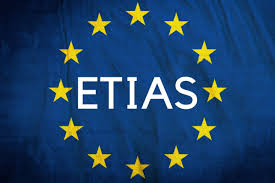
The European Union is gearing up to implement a new travel authorization system by summer 2025, introducing a €7 (£6) visa waiver for citizens from certain non-EU countries, including the UK. This initiative, known as the European Travel Information and Authorisation System (Etias), aims to enhance border security and streamline travel across 30 European countries.
Under the Etias scheme, visitors from non-EU countries will need to apply for an authorization before traveling to the Schengen Area, which includes most EU states, along with Iceland, Liechtenstein, Norway, and Switzerland. Currently, UK citizens and travelers from over 60 other non-EU countries, such as the US, Japan, and Australia, can enter the Schengen Area visa-free for up to 90 days within a 180-day period. However, the new system will require these travelers to obtain a waiver for similar durations, with visas needed for longer stays.
The Etias waiver will be valid for three years and will be linked to the traveler’s passport. If a passport expires before the waiver’s validity period ends, a new Etias application will be necessary. The application process will be online or through a mobile app, requiring about 10 minutes to complete. Most applications are expected to be processed within minutes, though some may take up to 72 hours, with exceptions possibly extending up to four weeks.
The waiver, priced at €7, is designed to be more affordable than the US ESTA, which costs $14 (€12.50; £10.75). The fee will apply to individuals aged 18 to 70, while children and those over 70 will not be charged. The exact start date of the Etias scheme remains uncertain, but it is expected to launch in the first half of 2025. During an initial period of at least six months, the requirement will not be enforced, though visitors are advised to apply for the waiver in advance.
The introduction of the Etias system is part of the EU's broader strategy to enhance border security and manage migration and terrorism concerns. The system aims to improve security checks and assess potential risks posed by travelers. Alongside Etias, the EU is also rolling out the Entry/Exit System (EES) on November 10. This system will introduce stricter digital controls at EU borders, requiring travelers to register fingerprints, a photo, and passport details. The EES is expected to replace passport stamping but may lead to longer processing times, potentially adding at least two minutes per passenger.
The EU's moves are seen as a response to the challenges posed by migration and security threats, seeking to bolster the integrity and safety of its borders while adapting to modern travel needs.
(Source:www.bbc.com)
Under the Etias scheme, visitors from non-EU countries will need to apply for an authorization before traveling to the Schengen Area, which includes most EU states, along with Iceland, Liechtenstein, Norway, and Switzerland. Currently, UK citizens and travelers from over 60 other non-EU countries, such as the US, Japan, and Australia, can enter the Schengen Area visa-free for up to 90 days within a 180-day period. However, the new system will require these travelers to obtain a waiver for similar durations, with visas needed for longer stays.
The Etias waiver will be valid for three years and will be linked to the traveler’s passport. If a passport expires before the waiver’s validity period ends, a new Etias application will be necessary. The application process will be online or through a mobile app, requiring about 10 minutes to complete. Most applications are expected to be processed within minutes, though some may take up to 72 hours, with exceptions possibly extending up to four weeks.
The waiver, priced at €7, is designed to be more affordable than the US ESTA, which costs $14 (€12.50; £10.75). The fee will apply to individuals aged 18 to 70, while children and those over 70 will not be charged. The exact start date of the Etias scheme remains uncertain, but it is expected to launch in the first half of 2025. During an initial period of at least six months, the requirement will not be enforced, though visitors are advised to apply for the waiver in advance.
The introduction of the Etias system is part of the EU's broader strategy to enhance border security and manage migration and terrorism concerns. The system aims to improve security checks and assess potential risks posed by travelers. Alongside Etias, the EU is also rolling out the Entry/Exit System (EES) on November 10. This system will introduce stricter digital controls at EU borders, requiring travelers to register fingerprints, a photo, and passport details. The EES is expected to replace passport stamping but may lead to longer processing times, potentially adding at least two minutes per passenger.
The EU's moves are seen as a response to the challenges posed by migration and security threats, seeking to bolster the integrity and safety of its borders while adapting to modern travel needs.
(Source:www.bbc.com)





